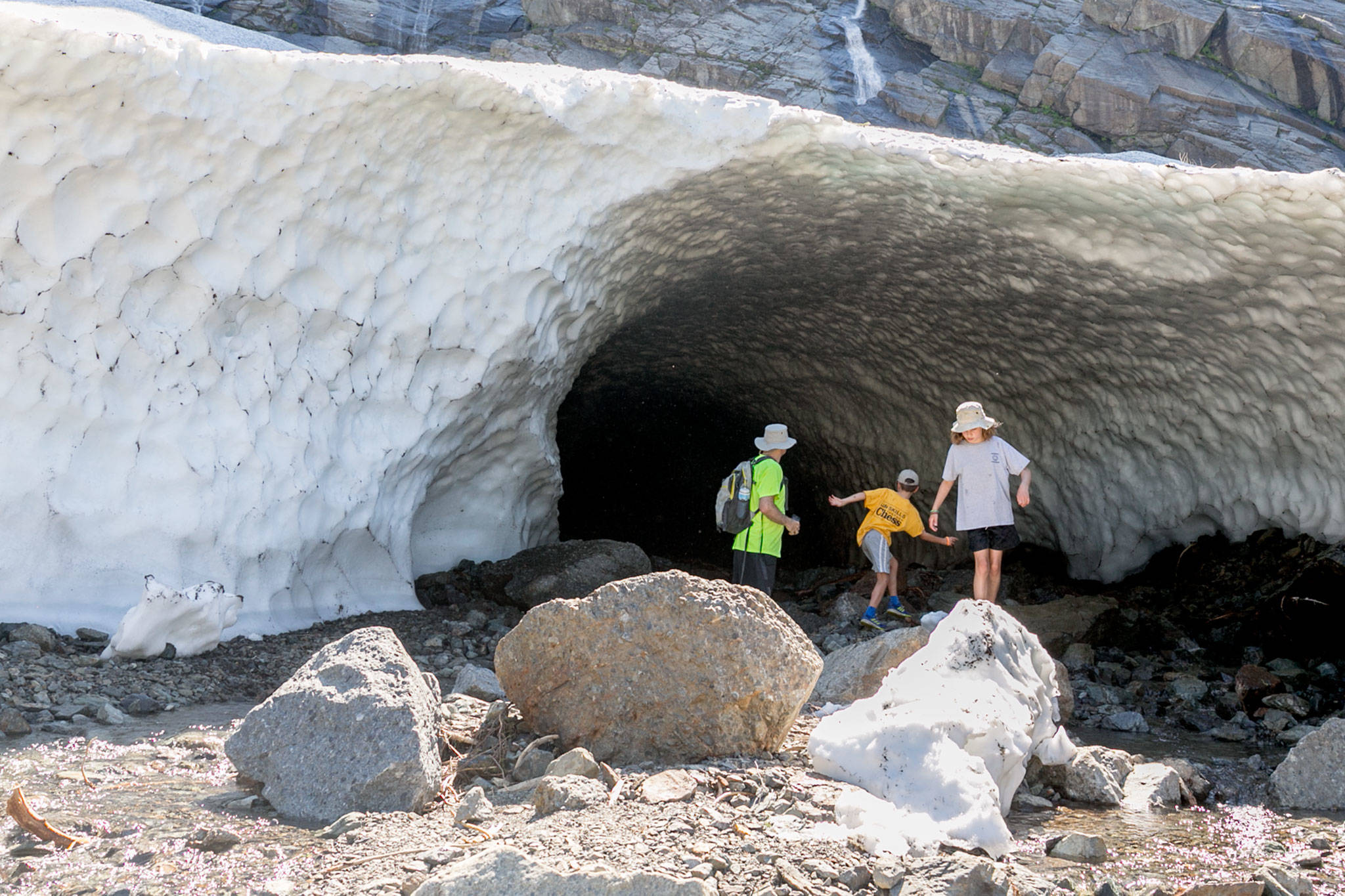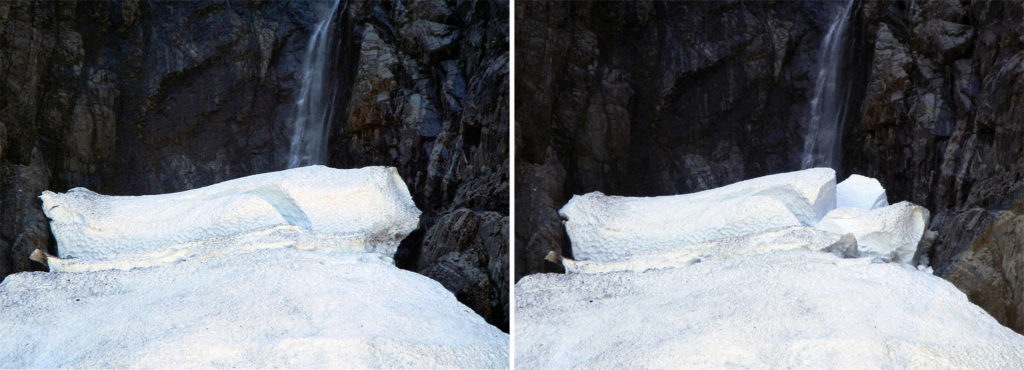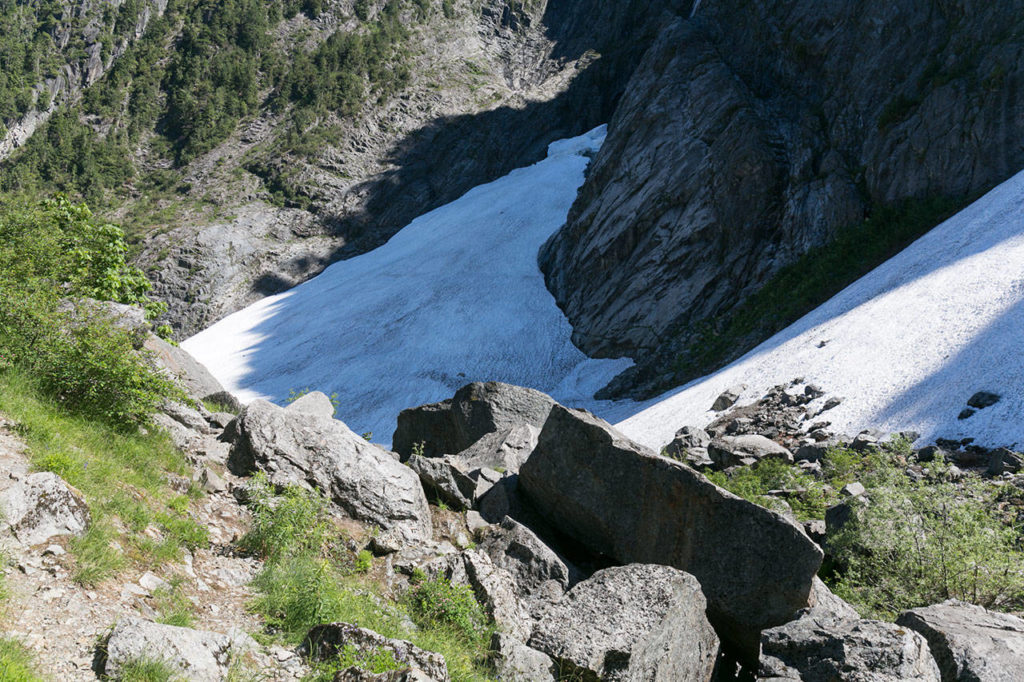VERLOT — People heard the sound of snow and ice collapsing Sunday afternoon.
Before and after photographs from the U.S. Forest Service show how the corner of a large chunk of snow fractured into several pieces near the top of the Big Four Ice Caves.
It’s a reminder that the snowfield there is unstable, and the ice caves unpredictable, particularly in warm weather.
“That’s just kind of the dynamics of the caves. It’s not a glacier, it’s not a permanent feature on the landscape,” said Peter Forbes, Darrington District ranger. “The caves may look sound, and they may be intriguing, but they’re not safe.”
In the past, collapsing ice has been fatal. Four people have died in the past 20 years, including an 11-year-old girl, Grace Tam, who was about 20 feet from the caves when she was struck by falling debris. More recently, in 2015, a partial collapse of the caves killed two hikers; one woman died in the caves and her brother died months later of his injuries.
“The conditions at the caves are constantly changing with the warming weather,” sheriff’s office spokeswoman Shari Ireton said in an email. “No one should ever enter the caves and should take extreme caution near them, due to ice- and rock-fall.”
Every year, emergency responders and forest service staff issue similar warnings. The popular trail, on the Mountain Loop Highway between Granite Falls and Darrington, draws tens of thousands of visitors during the summer months.
Despite warnings, which include signs placed along the trail, people have shared photos and videos on social media just this month showing visitors inside or near the mouths of the caves, or climbing on the snow above. Being on top of the snow can be as dangerous as going inside. The snow can give way beneath a climber or debris might fall from higher up.
“We’re just hitting the really warm weather. The caves are developing,” Forbes said. “As a part of that process, depending on how deep the snow is, they will also begin collapsing.”
The caves typically form in the spring and summer, as snowmelt and warmer air hollow out the massive mound of snow, ice and debris that accumulates over the winter in a gully on the north side of Big Four Mountain. Eventually, the hollows become openings to caverns within the snow pile. Chilly air drifts out, even on hot days, creating a sort of natural air conditioning. There is an overlook at the end of the hiking trail with a view of the snowfield and a memorial plaque for Grace Tam.
Along with the collapse near the top of the main snowfield Sunday afternoon, it appears part of one of the smaller cave openings gave way earlier that day, according to the Forest Service.
Staff are stationed there on the weekends to talk with people and offer safety reminders, Forbes said.
Other hiking trails are likely to have snowfields in places, as well. As with the ice caves, hikers should avoid climbing on top of snow that might be unstable. They are urged to stay on designated trails.
Kari Bray: 425-339-3439; kbray@heraldnet.com.
Talk to us
> Give us your news tips.
> Send us a letter to the editor.
> More Herald contact information.




























